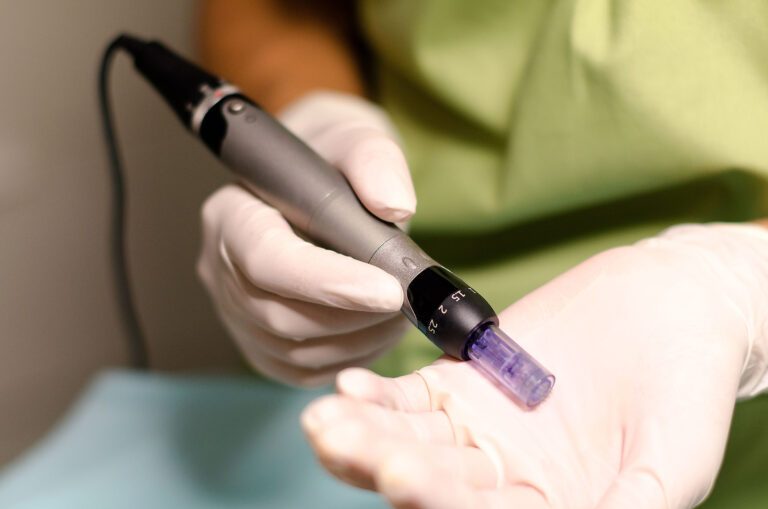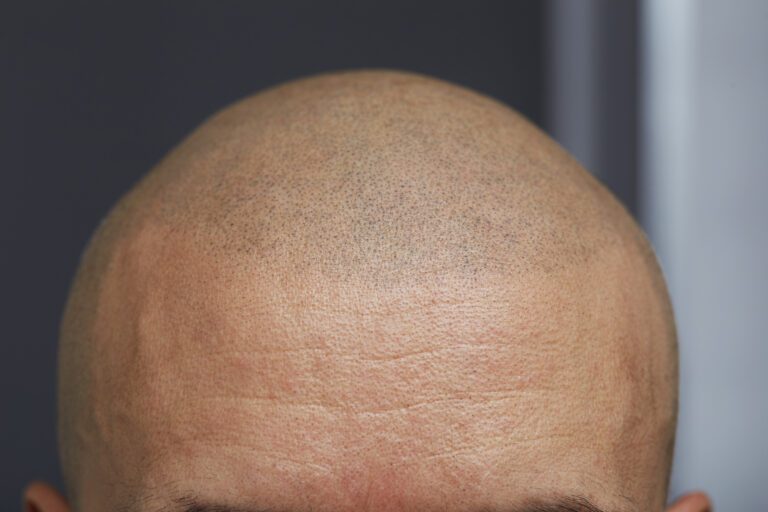Hair Plugs vs. Hair Transplants: Are They the Same Thing?
Are you suffering from hair loss? There are many treatments available that can help you combat baldness.
Hair plugs are an old treatment that was popular in the 90s and early 20s. They’re now outdated and rarely performed.
Currently, more advanced techniques exist, like follicular unit transplantation (FUT) and follicular unit extraction (FUE).
So, how does the old hair plugs method compare to modern-day hair transplants? Keep reading to find out everything you need to know about hair transplants vs. plugs.
What Are Hair Plugs?
Simply put, a hair plug is a round piece of the scalp that gets punched from the back and the sides of the head. A single plug is usually around 0.16 inches long and contains approximately 20 individual hairs.
As the name suggests, these pieces are plugged or planted into the balding area. Although hair plugs are made from the patient’s natural hair, they’re often mistaken for artificial hair.
That’s because they have a fake, unnatural appearance. In addition, there are gaps between the hair plugs that make them look more artificial. To elaborate, it’s similar to the fake hair on old plastic dolls with scattered groups of planted hair.
Note that hair plugs for men can differ from hair plugs for women, as men and women lose hair differently. Note also that there are two different procedures for hair plugs. Let’s talk about each one in detail.
1. Punch Graft
Punch grafts were the most common type of hair plugs. Doctors had used the then-popular procedure for well over 20 years!
The procedure involves using a punch tool to remove hair from the donor area. Then, the surgeon punches the follicles into the scalp. That results in a high concentration of hair in one area with around 20 follicles.
To make the area appear somewhat natural, it could take up to four or five incredibly painful sessions.
2. Micro/Mini Plugs
Mini and micro plugs are more advanced than punch grafts. They involve cutting a strip from the donor area and attaching it to slits in the scalp by stitching or stapling.
Naturally, this can be pretty painful. On top of that, the plugs don’t result in natural-looking hair. The area might look patchy with abrupt demarcation lines.
Further, this procedure takes a longer time, as the previous plugs must heal completely before making more slits in the scalp.
The difference between mini and micro plugs is the number of hair follicles in the graft. Micro plugs contain up to 10 hairs, while mini plugs contain only four.
Side Effects of Hair Plugs Procedures
Aside from the doll-like look, traditional hair plugs had many other downsides. Here are some potential side effects of hair plugs:
- Bleeding
- Swelling
- Infection
- Scarring
- Pain and discomfort
- Scalp numbness
- Ingrown hairs
- Temporary hair loss
What Are Modern Hair Transplant Procedures?
Currently, there are two main procedures for hair restoration: FUE and FUT. Let’s discuss each one in detail.
Follicular Unit Extraction (FUE)
Follicular unit extraction (FUE) is a type of hair transplant that involves taking individual hair follicles from the skin and planting them in the balding area.
The surgeon uses micro-punches to extract single hair follicles, which leaves little to no signs of extractions. Then, the surgeon makes a series of tiny incisions to insert the extracted follicles. After that, the surgeon cleans and bandages the area for recovery.
FUE has become more popular than FUT. That’s because FUT usually leaves the “hair plug” look on the balding area.
Generally, FUE is a precise and efficient procedure. The results are highly satisfactory, and the healing process doesn’t take long. However, a big part of the surgery is done manually, which can be expensive and time-consuming.
FUE has proven its effectiveness for African American hair transplants. African American hair is fragile and curly, so other types of hair transplants are hard to perform on it.
With FUE, the donor area heals in around 2 days and the follicles are implanted densely. So, it doesn’t leave a “hair plug” look.
Follicular Unit Transplantation (FUT)
Follicular Unit Transplantation (FUT) involves cutting a strip of skin from your scalp. It’s usually taken from the back of the head.
The size of the strip mainly depends on the number of follicles we need to cover bald spots. Typically, the strip doesn’t exceed 0.6 inches wide. After taking the required grafts, the surgeon stitches up the incision.
Then, the surgeon removes individual hair follicles from the strip. After that, they use a needle or a blade to make small holes in the scalp and transplant the grafts to the balding area.
Overall, the surgery is much quicker than FUE, as it only takes 4-8 hours. The process is performed under local anesthesia, meaning you’ll be awake, but you’ll feel nothing.
Hair Plugs vs. Hair Transplant: Which Is Better for You
Needless to say, FUE and FUT are far more advanced when compared to hair plugs. They provide better results, and their side effects are more tolerable.
For starters, modern procedures leave significantly less scarring. In fact, FUE leaves little to no scars at all. Not to mention how the healing process will be a lot smoother.
Further, hair transplants look far more natural than the doll-like appearance of hair plugs. In hair plugs, the hair follicles are aggregated in certain areas, so they’re easy to detect.
Generally, hair transplants are pretty expensive. The procedure can cost around $4,000 to $15,000. Yet, the recovery time is much shorter and easier than with hair plugs.
Additionally, there are very few doctors who still perform hair plugs today. So, even if you want to undergo the procedure, you probably won’t have a variety of skilled professionals to choose from. Most professional surgeons are currently performing FUE and FUT procedures only.
As if that wasn’t enough to convince you, hair plugs procedures can sometimes fail. On the other hand, hair transplants show much better results and success rates.
All in all, hair transplants are regarded to be the superior, more technologically advanced procedures.
Hair Implants and Hair Plugs
Many within the hair transplant industry refer to hair implants as plugs. However, hair implants are different from traditional plugs.
The term “hair implants” is also falsely used to refer to hair transplants. Generally, an implant means the insertion of synthetic hair into the scalp.
This procedure isn’t FDA-approved, and it’s been banned in the United States due to the high risks of infection and inflammation.
Other Alternatives to Hair Plugs
With hair plugs being outdated and modern hair transplants being expensive, you might consider other alternatives to combat hair loss.
There are many treatments that have proven their effectiveness against balding. Before we tell you about them, we highly recommend checking with your dermatologist to determine the cause of the hair loss.
That’s because some underlying diseases can cause hair loss, and once they’re treated, your hair might grow back again.
That said, let’s check out some of the most popular and effective hair loss treatments.
1. Minoxidil
Minoxidil is perhaps the most popular drug to combat hair loss. It can stimulate hair growth and slow down further hair fall. However, it can take around 3-6 months for the drug to show results.
2. Finasteride
While it was mainly used to treat benign prostatic hyperplasia, the FDA approved Finasteride as a hair loss drug.
3. Microneedling
As the name suggests, the process involves a device that has hundreds of tiny needles. These needles make small incisions in the scalp, which stimulates healing and hair growth.
4. Platelet Rich Plasma (PRP)
PRP is the process in which we extract plasma from a patient’s blood sample. Then, we inject the PRP into the scalp, which stimulates hair growth in that area.
FAQs
How long does it take to perform hair plugs?
A study from 1971 states that the hair plugs procedure can take around 16 weeks to finish for a deep hairline recession. On the other hand, modern techniques can take only 4 to 8 hours.
Can I switch from hair plugs to FUE or FUT?
Yes. If you’ve had hair plugs in the past, you can still get a modern hair transplant, provided that you have enough grafts for the balding area.
Wrapping Up
A “hair plug” is an outdated method to treat hair loss. The procedure takes a significantly long time to perform and doesn’t give satisfying results.
Plugs in hair give a doll-like appearance to the hair. However, more advanced techniques, like FUE and FUT, provide you with a more natural appearance.
On top of that, modern hair transplants are less painful and more effective. Finally, we hope our hair plugs vs. hair transplants comparison will help you make the right decision.







